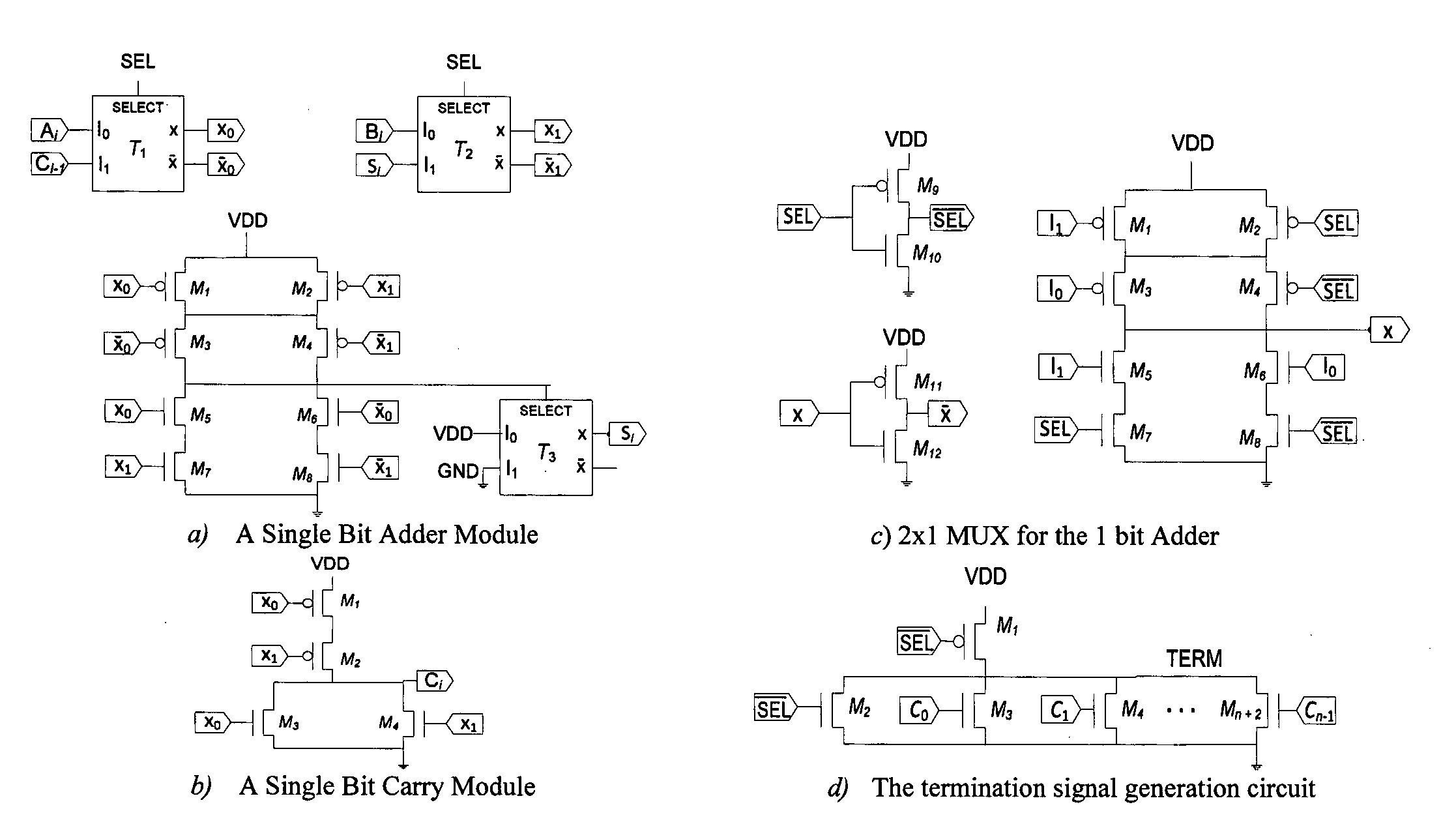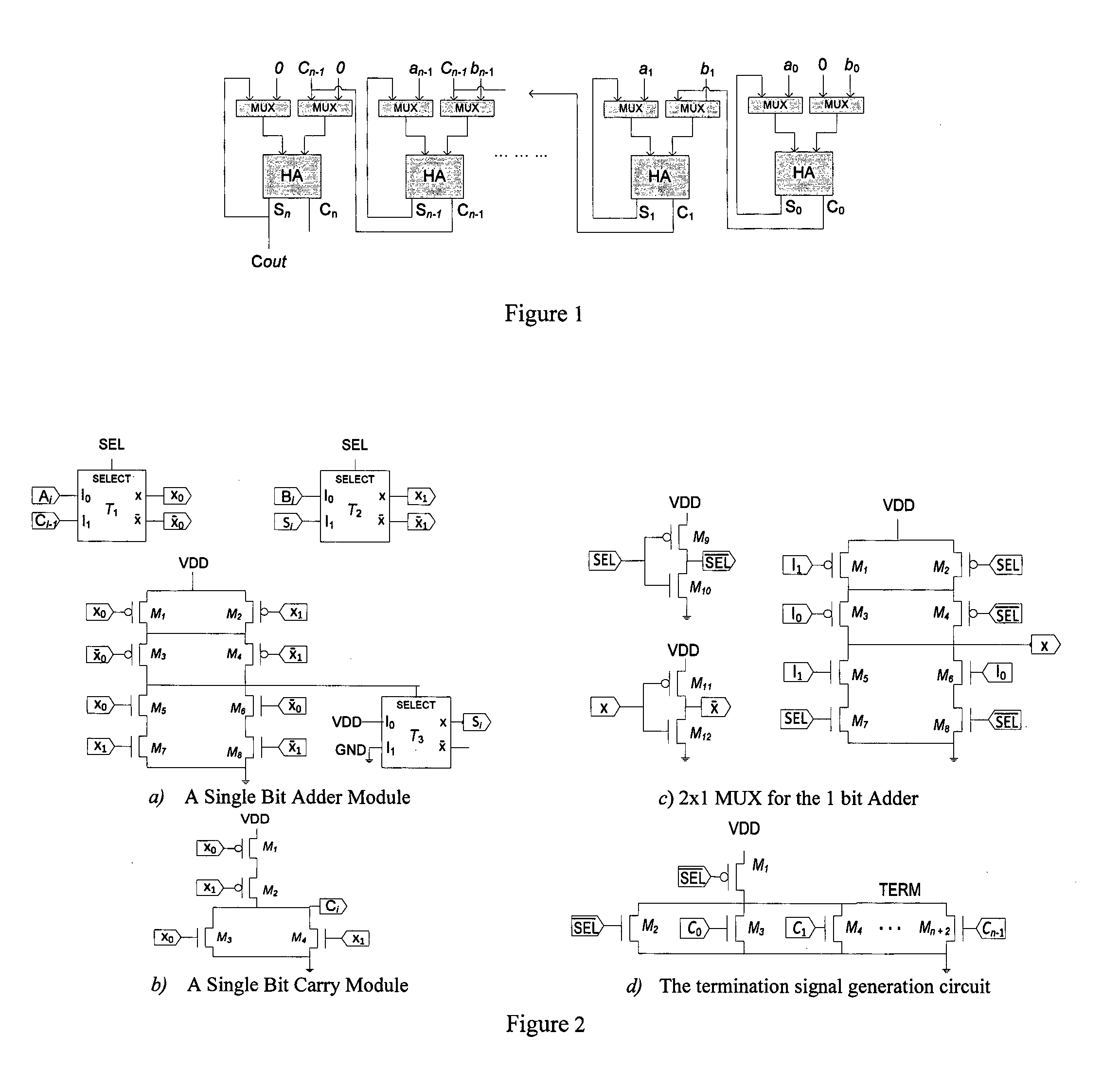Parallel self-timer adder (PASTA)
a self-timer adder and adder circuit technology, applied in the field of parallel self-timer adders and adder circuits, can solve the problems of inability to manufacture vlsi, inability to implement a parallel algorithm for adding, and high cost of half-adders in area, time and interconnection complexity
- Summary
- Abstract
- Description
- Claims
- Application Information
AI Technical Summary
Benefits of technology
Problems solved by technology
Method used
Image
Examples
Embodiment Construction
[0017]A first embodiment of the parallel self-timed adder is presented in FIG. 1. Multi-bit adders are often constructed from single bit adders using combinatorial and sequential circuits for asynchronous or synchronous design. The sequential circuits are often serial / chain adders and are not the match for high speed combinatorial adders.
[0018]Let an−1an−2 . . . a0 and bn−1bn−2 . . . b0 be two n-bit binary numbers with sum and carry denoted by Sn−1Sn−2 . . . S0 and cncn−1 . . . c0 where 0th bit represents the least significant bit. Basic single bit adders are now discussed.
Single Bit Adders:
[0019]Single bit Half-Adder (HA) and Full-Adder (FA) are the fundamental building blocks for nearly all high-speed adders. A single bit HA for ith bit addition is logically formulated as follows:
Si=ai⊕bi
ci+1=aibi (1)
[0020]According to delay model by A. Tyagi. A reduced-area scheme for carry-select adders. IEEE Trans. Comput., 42(10):1162-1170, October 1993; simple logic gates (AND, OR, NAND, N...
PUM
 Login to View More
Login to View More Abstract
Description
Claims
Application Information
 Login to View More
Login to View More - R&D
- Intellectual Property
- Life Sciences
- Materials
- Tech Scout
- Unparalleled Data Quality
- Higher Quality Content
- 60% Fewer Hallucinations
Browse by: Latest US Patents, China's latest patents, Technical Efficacy Thesaurus, Application Domain, Technology Topic, Popular Technical Reports.
© 2025 PatSnap. All rights reserved.Legal|Privacy policy|Modern Slavery Act Transparency Statement|Sitemap|About US| Contact US: help@patsnap.com



